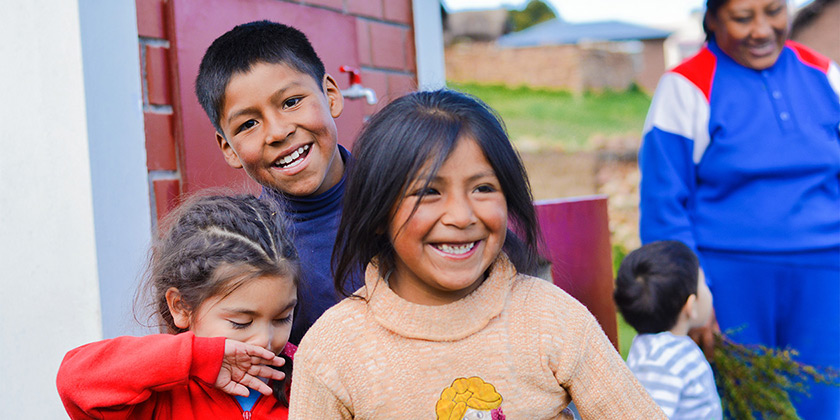
Principal investigators
By Tiffany Haynes, Ph.D.
Assistant Professor, Department of Health Behavior and Health Education
Fay W. Boozman College of Public Health
University of Arkansas for Medical Sciences, Little Rock, AR

Dr. Tiffany Haynes, Ph.D.
Rural African Americans are disproportionately exposed to numerous stressors, such as poverty, racism, and discrimination,1–5 that place them at risk for experiencing elevated levels of depressive symptoms.6 Elevated levels of depressive symptoms can lead to a host of negative outcomes, including poor management of chronic illnesses (e.g., hypertension, diabetes), poor social and occupational functioning, and development of clinical depression.7 Although effective treatments for decreasing depressive symptoms exist, structural barriers (e.g., lack of available services, transportation) and perceptual barriers (e.g., stigma, fear of misdiagnosis) impede the use of traditional mental health services within these communities, resulting in a significant unmet psychiatric need. Failure to develop culturally appropriate strategies to provide adequate, timely care to rural African Americans can result in a significant public health crisis.
African American churches have been identified as potential venues for providing depression education and treatment for rural African Americans.8 Within the African American rural community, churches represent a key portal through which as much as 85% of the community can be reached.9 Churches have been used to address physical health outcomes in those communities, but few have focused primarily on addressing mental health outcomes10-11. Through the NIMHD-funded project entitled “Faith Academic Initiatives to Transform Health (FAITH) in the Delta,” our partnership, consisting of faith community leaders and University of Arkansas for Medical Science researchers, conducted formative work in the Arkansas Delta. Data suggested that community members consider elevated depressive symptoms to be a significant unmet need. Furthermore, community members suggested that attempts to improve depressive symptoms should do the following:
Continue reading “Addressing Mental Health in African Americans Through FAITH” →






























 This blog series includes perspectives from authors of the American Journal of Public Health supplement, New Perspectives to Advance Minority Health and Health Disparities Research. The supplement highlights strategies to stimulate research for improving minority health and closing the gap in health disparities.
This blog series includes perspectives from authors of the American Journal of Public Health supplement, New Perspectives to Advance Minority Health and Health Disparities Research. The supplement highlights strategies to stimulate research for improving minority health and closing the gap in health disparities.




















 Until recently, researchers assumed that what they learned about White male participants could be safely applied to anybody, regardless of gender, race, ethnicity or other variables. We now know that this isn’t true. When you’re communicating about research results, it’s vital not only to explain how a study was done, but who was being studied.
Until recently, researchers assumed that what they learned about White male participants could be safely applied to anybody, regardless of gender, race, ethnicity or other variables. We now know that this isn’t true. When you’re communicating about research results, it’s vital not only to explain how a study was done, but who was being studied.
















 Each year in April, the Office of Minority Health at the U.S. Department of Health and Human Services (HHS) leads our sister HHS agencies in commemorating National Minority Health Month. This year’s theme, “Partnering for Health Equity,” is a sustainable message which we not only recognize this month but also put into practice all year long through our research, training, and outreach programs and activities.
Each year in April, the Office of Minority Health at the U.S. Department of Health and Human Services (HHS) leads our sister HHS agencies in commemorating National Minority Health Month. This year’s theme, “Partnering for Health Equity,” is a sustainable message which we not only recognize this month but also put into practice all year long through our research, training, and outreach programs and activities.
























 One example involves detecting and managing depression and subsequent alcohol and substance abuse, risk of suicide, and, more recently, trauma among patients in large primary care settings operated by tribal health programs. In 2001, the Southcentral Foundation’s Primary Care Center in Anchorage, Alaska, initiated Screening, Brief Intervention, and Referral for Treatment (SBIRT) among Alaska Native patients age 18 and older.1 Their efforts, which integrated masters-level behavioral health clinicians within the care teams, demonstrated that such evidence-based practices could be tailored to this population in scientifically sound and clinically meaningful ways.2 Over a 5-year period beginning in 2004, 55 percent of the 8,000 patients who scored positive for alcohol use disorder agreed to follow-up treatment. Thanks to those results, the state of Alaska authorized Medicaid reimbursement for SBIRT, leading to the service becoming fully self-sustainable. This approach has been expanded to other tribal primary care settings in Alaska and in rural, reservation, and urban clinics in the lower 48 states. It now includes AI/AN youth ages 12 to 17 and covers other conditions, notably suicide risk and trauma.3
One example involves detecting and managing depression and subsequent alcohol and substance abuse, risk of suicide, and, more recently, trauma among patients in large primary care settings operated by tribal health programs. In 2001, the Southcentral Foundation’s Primary Care Center in Anchorage, Alaska, initiated Screening, Brief Intervention, and Referral for Treatment (SBIRT) among Alaska Native patients age 18 and older.1 Their efforts, which integrated masters-level behavioral health clinicians within the care teams, demonstrated that such evidence-based practices could be tailored to this population in scientifically sound and clinically meaningful ways.2 Over a 5-year period beginning in 2004, 55 percent of the 8,000 patients who scored positive for alcohol use disorder agreed to follow-up treatment. Thanks to those results, the state of Alaska authorized Medicaid reimbursement for SBIRT, leading to the service becoming fully self-sustainable. This approach has been expanded to other tribal primary care settings in Alaska and in rural, reservation, and urban clinics in the lower 48 states. It now includes AI/AN youth ages 12 to 17 and covers other conditions, notably suicide risk and trauma.3
